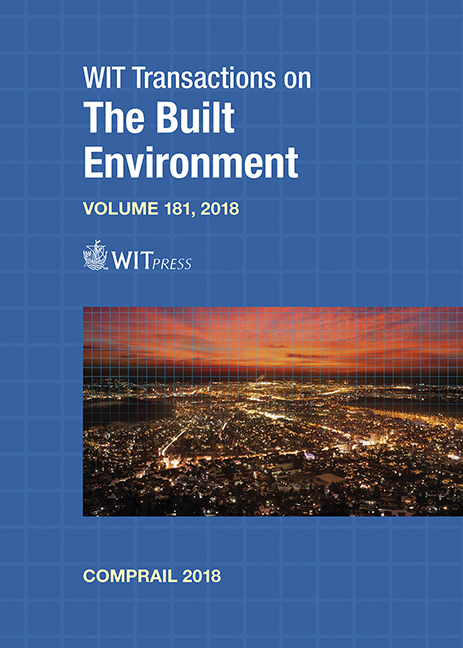SUPPRESSION OF VERTICAL VIBRATION IN RAILWAY VEHICLE CARBODIES THROUGH CONTROL OF DAMPING FORCE IN PRIMARY SUSPENSION: PRESENTATION OF RESULTS FROM RUNNING TESTS WITH METER-GAUGE CAR ON A SECONDARY LINE
Price
Free (open access)
Transaction
Volume
181
Pages
9
Page Range
329 - 337
Published
2018
Size
499 kb
Paper DOI
10.2495/CR180301
Copyright
WIT Press
Author(s)
YOSHIKI SUGAHARA, TAKASHI KOJIMA
Abstract
To improve vertical ride comfort in railway vehicles, the suppression of vertical bending-mode vibration and rigid-body-mode vibration in the carbody is essential. Primary suspension damping control systems, designed to reduce bending mode vibrations in carbodies for high-speed trains, have been proposed in the past. These systems consist of variable vertical dampers affixed to the primary suspension, accelerometers attached to the bogie frames, and a controller. Results from vehicle running tests carried out on a number of Shinkansen lines demonstrated that these systems reduced the power spectral density (PSD) peak value of vertical carbody vibration accelerations in the first-bending-mode by 80 per cent compared to when the system was not used. This paper reports on the application of this system to a meter-gauged vehicle. Vehicle running tests were carried out on a secondary meter-gauge line at moderately high running speeds (about 100 km/h or lower). Test results showed that the system reduced the PSD peak of vertical vibration accelerations stemming from bending-mode vibrations of the carbody by almost 90 per cent thanks to an LQG controller tuned for reducing bending-mode vibrations. When vehicles run at low speed (about 60 km/h) on secondary lines, the rigid-body-mode vibrations of the carbody in the 1–2 Hz frequency range tend to increase from time to time. The system was therefore also applied to reduce these vibrations. Results from vehicle running tests applying the LQG controller that had been re-tuned for reducing rigid-body-mode vibrations, showed that the PSD peak in vibration accelerations at 1.2 Hz was reduced by half.
Keywords
railway vehicle, semi-active suspension, vibration control, primary suspension, variable damper





